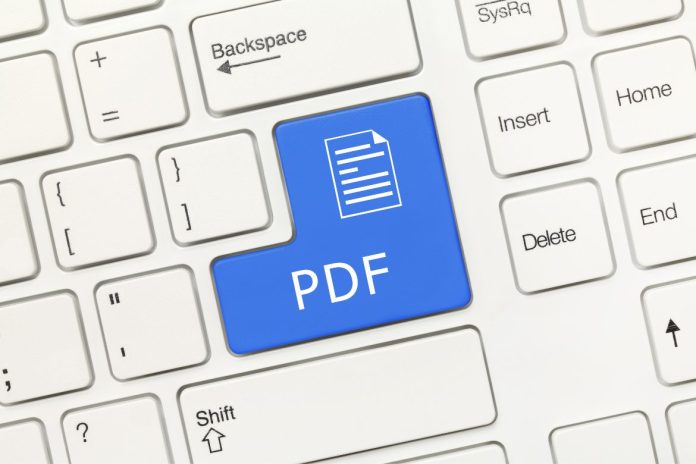In today’s digital age, file management has become an essential aspect of both personal and professional life. With the ever-increasing volume of digital files, it has become crucial to have an efficient and organized system to store and manage them. Among the various file types, JPEG and PDF are two widely used formats for images and documents, respectively. Often, individuals and businesses need to convert JPEG files to PDF for various purposes, such as sharing, printing, or archiving. However, this seemingly simple task can become time-consuming and tedious if not done efficiently. In this article, we will delve into the art of JPEG to PDF conversion and explore the different methods and tools available for efficient file management. From understanding the basics of these file formats to learning advanced techniques, this article aims to equip readers with the knowledge and skills to streamline their file conversion process and optimize their file management system. So, whether you are a business professional, a student, or simply someone looking to better manage your digital files, read on to master the art of JPEG to PDF conversion.
Streamline your workflow with file conversion
Efficient file management is essential for businesses and professionals who deal with a large volume of documents and files on a daily basis. One of the key aspects of streamlining your workflow is file conversion. Converting files from one format to another, such as JPEG to PDF, can offer numerous benefits. PDF files are widely recognized and can be easily accessed and viewed across different devices and operating systems. By converting JPEG files to PDF, you can ensure compatibility and preserve the quality and formatting of your documents. Additionally, PDF files offer enhanced security features, allowing you to protect sensitive information and control access to your files. With the right file conversion tools and techniques, you can significantly improve your workflow efficiency and simplify the management of your documents.
Maximize storage space and organization
Efficient file management goes beyond just converting file formats; it also entails maximizing storage space and organizing your digital files effectively. With the increasing amount of digital data being generated and stored, it is crucial to have a systematic approach to managing and organizing your files. One effective strategy is to categorize and label your files in a logical and consistent manner. This allows for easy retrieval and minimizes the risk of misplacing important documents. Additionally, consider utilizing cloud storage solutions or external hard drives to free up space on your local devices. By implementing these storage optimization and organizational techniques, you can create a streamlined and clutter-free digital workspace, ultimately enhancing productivity and reducing the time spent searching for specific files.
Convert JPEG files to PDF seamlessly
In today’s fast-paced digital world, the need to convert JPEG files to PDF seamlessly has become increasingly important for efficient file management. Whether you are working on a professional project, preparing documents for presentations, or archiving important images, converting JPEG files to PDF offers numerous benefits. PDF files provide a universal format that is compatible with various devices and operating systems, ensuring easy accessibility and sharing. Moreover, PDFs allow for secure encryption, ensuring the confidentiality and integrity of your files. By utilizing reliable software or online converters, you can effortlessly convert JPEG files to PDF, preserving the quality and original content while seamlessly integrating them into your document workflow. This essential skill in efficient file management allows for better organization, collaboration, and long-term preservation of your valuable digital assets.
Save time and resources with efficiency
As the demands of the digital landscape continue to grow, finding ways to save time and resources has become paramount in ensuring productivity and success. Embracing efficiency in file management not only enables smooth workflows but also maximizes the utilization of available resources. By streamlining processes like file conversion, such as transforming JPEG files to the universally accepted PDF format, professionals can save valuable time that would otherwise be spent on manual tasks. This enhanced efficiency allows for increased focus on core responsibilities, improved collaboration among team members, and the allocation of resources towards more strategic initiatives. By embracing the art of JPEG to PDF conversion and other efficiency-enhancing practices, businesses can unlock their full potential, achieve higher productivity levels, and ultimately drive greater success in today’s competitive digital landscape.
Elevate your file management skills
In order to elevate your file management skills and achieve even greater efficiency, it is essential to adopt a comprehensive approach that encompasses not only file conversion but also organization, storage, and retrieval. Implementing a systematic filing system that categorizes documents based on their relevance, date, or department can significantly reduce the time spent searching for specific files. Additionally, utilizing cloud-based storage solutions allows for seamless access to files from any location, promoting collaboration and remote work. Investing in file management software with advanced search capabilities and document tagging features can further enhance efficiency by quickly locating specific files and reducing manual sorting efforts. By mastering the art of file management and leveraging the right tools and techniques, professionals can optimize their productivity, streamline workflows, and stay ahead in today’s fast-paced digital world.
In today’s digital age, file management is a crucial skill that can greatly improve efficiency and organization. Converting JPEG files to PDF is one aspect of this skill that can streamline document management and make collaboration easier. By following the tips and methods discussed in this blog post, individuals and businesses can enhance their file management systems and save valuable time and resources. Ultimately, mastering the art of JPEG to PDF conversion is a valuable tool for anyone looking to optimize their digital workflow.







